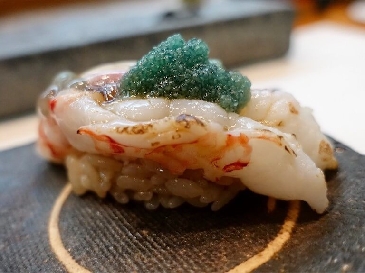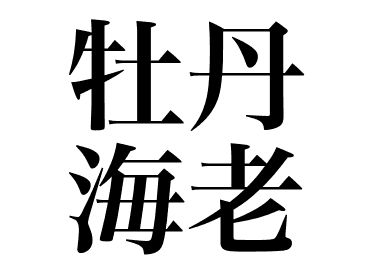Prawn and crab


Botan shrimp (Botan ebi)
【Nigiri sushi: Ebi/Kani】
What is Botanebi?
Botan ebi lives at depths of about 200 to 500 meters in cold seas. The higher the temperatures of the water, the deeper they live. They used to live in many places in the Pacific Ocean south of Hokkaido’s Funka Bay, but they’ve become scarce in Hokkaido and Toyama, so Japan mostly relies on imports from Russia and Alaska.
What does Botanebi (Botan shrimp) nigiri sushi taste like?
Botan ebi has a more potent sweetness and luxurious flavor than Ama ebi shrimp. This prawn should be made into Nigiri sushi with gentle hand pressure as it has soft flesh. Sometimes bluish-green roe is placed on top of sushi or rolled with Gunkan maki style. Like Ama ebi, it’s not good when eaten live. Instead, keep in mind that eating it about 12 hours after it’s been caught is when the sweetness really comes out and the texture is good.
When sushi chefs speak of "Button shrimp," they are referring to Toyama shrimp. This is because we cannot rely on the unstable supply of button shrimp. Toyama shrimp is widely distributed in the North Pacific Ocean from Toyama Bay and northward on the Sea of Japan side, from the Hokkaido coast to the Sea of Okhotsk and the Bering Sea. It inhabits sandy muddy bottoms at depths of 100~350m. Body length is about 20 cm. In the market, both Button shrimp and Toyama shrimp are called Button ebi, which is very complicated.
Scientific name: Pandalus nipponensis (Yokoya, 1933), Pandalus hypsinotus Brandt, 1851
(Revision date: July 17, 2024)
【Related contents】
What is Spot prawn?
There are strangely two types of Ama ebi
List of Prawn (Ebi) and Crab (Kani)

